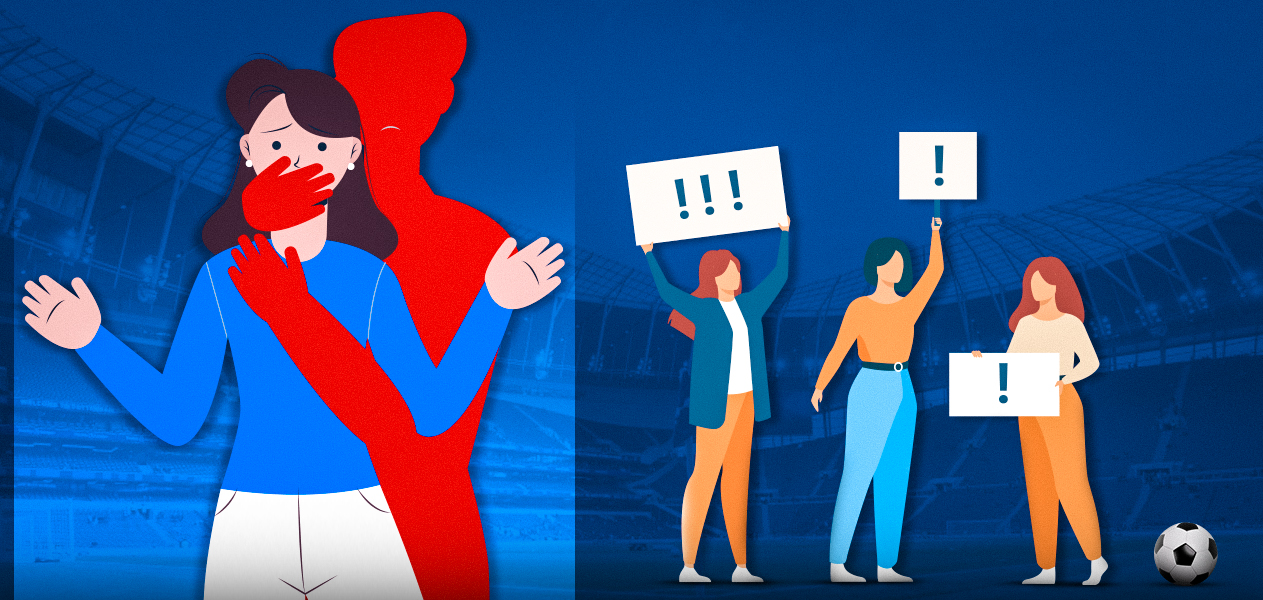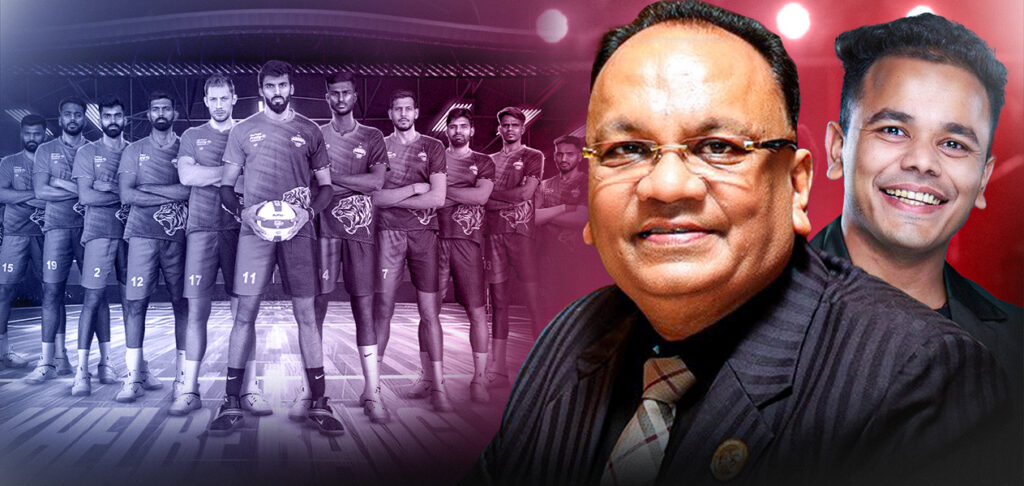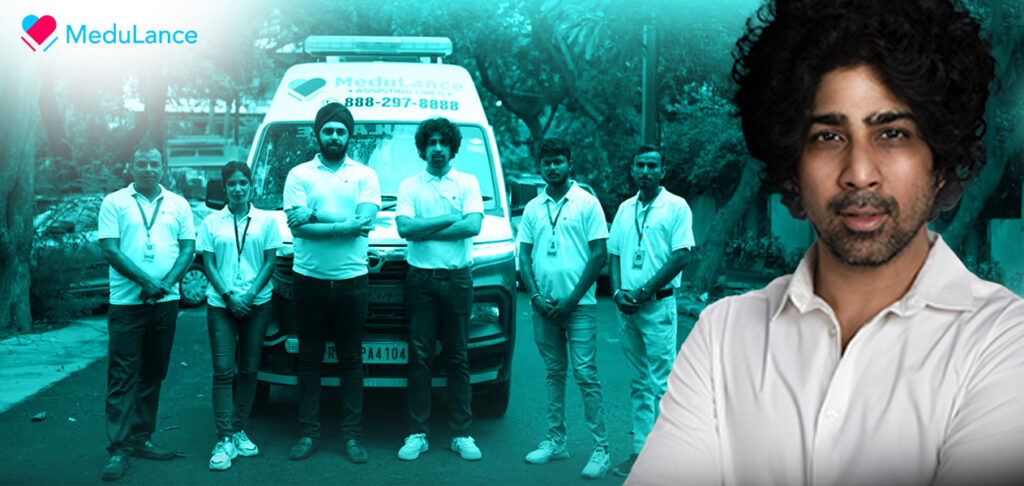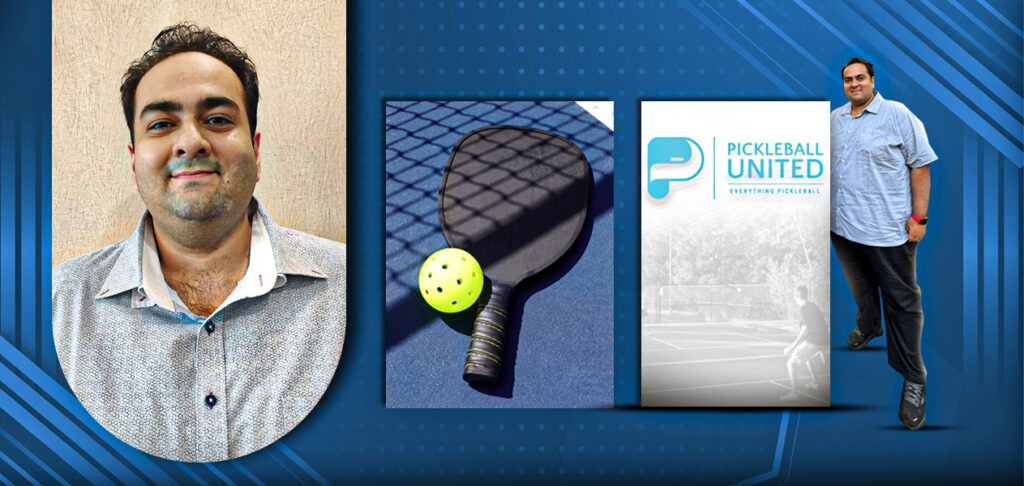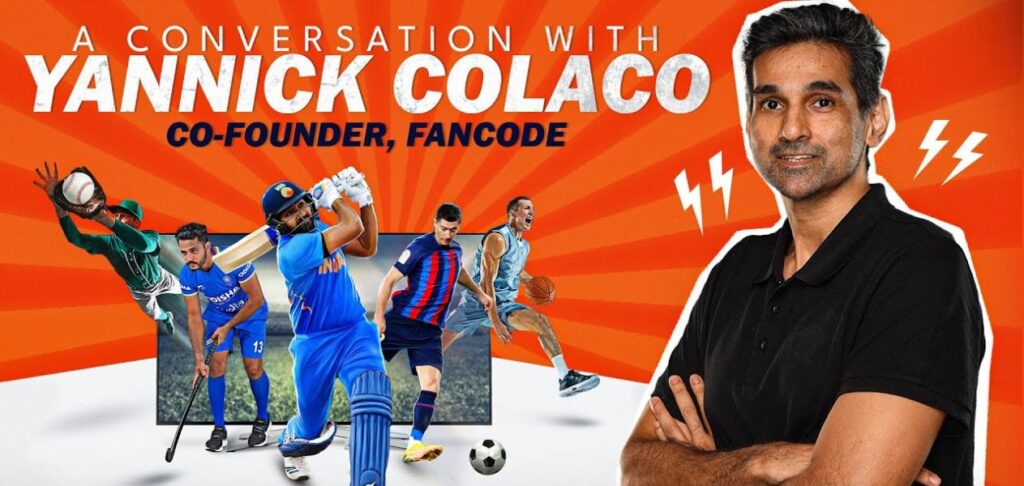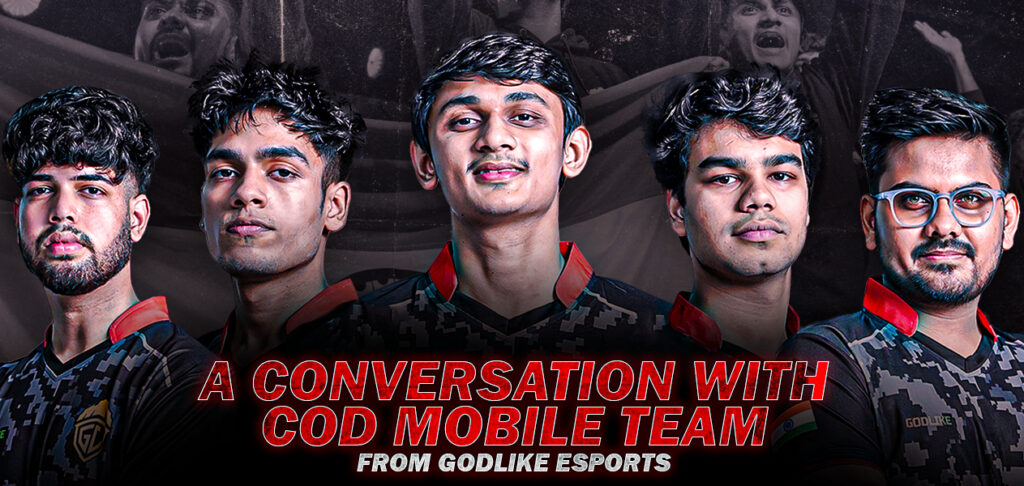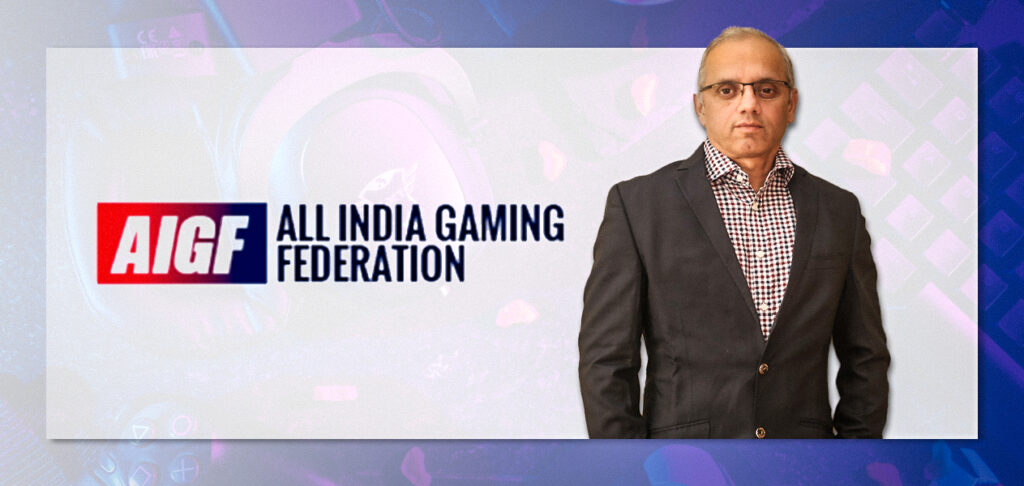A year-long investigation into US women’s football uncovered systemic abuse of players, but where does Indian football stand with respect to this, and what can we do to improve the standards of women’s football in the country?
Last year, US Soccer commissioned Sally Yates, a former deputy attorney general, and the law firm King & Spalding to look into the sport after reports in The Athletic and The Washington Post detailed accusations of sexual and verbal abuse against coaches in women’s football across the US. After news reports emerged and games were postponed in the National Women’s Soccer League, the foremost professional women’s football competition in the country, as furious players protested publicly, league executives either resigned or were fired. Within weeks, half of the coaches of the ten-team league had been linked with allegations of abuse, and some of the top players in women’s football came forward to recount their own tragedies of mistreatment.
A systematic failure
The Yates Report is, in effect, more than 300 pages of tragedy: personal tragedies compounded by the tragedy of chronic institutional failure, each one of them part of a mosaic that has left an open wound, an aching scar in the heart of women’s football. But the saddest part of all was in knowing that, so often, it was the love and enthusiasm for the game that was weaponised by those in power to silence those trying to safeguard the game in order to protect those damaging it.
The National Women’s Soccer League (NWSL), its teams and even football in the US in general, the Yates report found, “gave little thought or attention to basic player protections.” Instead, investigators concluded, “the focus was on keeping eight teams on the field to ensure the league’s survival.”
Those reporting abuse, in other words, were either ignored or discouraged by leveraging their passion for football against them, while those committing it were indulged—ushered into new jobs with hearty farewells—because, it seems, of an unwillingness to rock the boat in case everyone ended up submerged. The players believed in their mission to grow women’s football as a sport; they had a responsibility not just to themselves but to the sport as well, and that, too often, was used against them.
One coach called in a player to review game footage but instead showed her pornography. Another coach was notoriously known for berating his players and then quizzing them about their sex lives while throwing jokes regarding the legal age for consensual sexual intercourse. Another coach coerced multiple players into sexual relationships, behaviour that one team found so disturbing that they fired him. However, when a rival team hired him a couple of months later, the original club, who had documented his behaviour in an internal investigation, said nothing. Instead, they publicly wished him well for his new post.
The report, which came out a year after players were outraged by what they saw as a culture of abuse in their sport and demanded changes by refusing to take the field, revealed that leaders of the NWSL and the United States Soccer Federation (USSF), the governing body of football in the US, as well as owners, executives and coaches at all levels failed to act on years of voluminous and persistent reports of abuse by players. They were more concerned about being sued by coaches or about the teetering finances of women’s professional football than player welfare, creating a system in which abusive and predatory coaches were able to move freely from team to team at the top levels of women’s football.
“Our investigation has revealed a league in which abuse and misconduct — verbal and emotional abuse and sexual misconduct — had become systemic, spanning multiple teams, coaches and victims,” Sally Q. Yates, the lead investigator, wrote in the report’s executive summary. “Abuse in the N.W.S.L. is rooted in a deeper culture in women’s soccer, beginning in youth leagues, that normalises verbally abusive coaching and blurs boundaries between coaches and players.”
The report stated that the sport did little to train athletes and coaches about harassment, retaliation and fraternisation. It noted that “overwhelming” numbers of players, coaches and US Soccer staff members had remarked that “women players are conditioned to accept and respond to abusive coaching behaviours as youth players”.
What’s happening in India?
About three months ago, a member of the Indian U17 women’s team coaching staff was sent back to India in the middle of the team’s tour to Italy and Norway after alleged “sexual misconduct” involving one of the players in the team. The All India Football Federation (AIFF), at the time, acknowledged the development and issued a statement saying that it was initiating an investigation against the alleged event of “misconduct”.
Apart from the AIFF, around 28 out of the 35 AIFF-affiliated state associations and units came together to issue a statement. While it was indeed a step in the right direction, a few former players also voiced their anger and frustration at the state associations for not carrying out their roles and duties in their respective regions.
The accused individual was charged under Section 12 and Section 23 of the Protection of Children from Sexual Offences (POSCO) Act. As a result, in July, police officers attached to the Dwarka Police Station showed up at the coaches’ residence in Goa and took him to the nearby Colva Police Station.
While “making inquiries”, the said individual, according to documents submitted in court, developed chest pain for which he was taken to the district hospital in Margao where he was kept under observation.
The accused coach was served with a notice directing him to appear before the Dwarka Police Station on August 16, prompting him to file a transit anticipatory bail. On September 12, Additional Sessions Judge Pooja Kavlekar granted the transit anticipatory bail “for a period of three weeks to enable the applicant to approach the competent Court for seeking appropriate relief”.
Now, a transit anticipatory bail is granted to any person who is apprehending arrest by police of a state other than the state they are presently located in. In this case, the accused coach was living in Goa, while the case was filed in New Delhi.
In his transit anticipatory bail application, the accused individual stated that his termination letter nowhere mentioned the word “sexual misconduct”, rather it only referred to “misconduct”.
“The applicant is innocent and does not have any past criminal antecedents. The applicant is a victim of some political vendetta prevailing in the AIFF. The allegations made against the applicant are completely baseless and devoid of any merit and substance. The applicant is only seeking for a transit anticipatory bail for a limited period of three weeks so as to enable the applicant to approach the concerned Court in New Delhi and file a regular anticipatory bail application,” said the accused coach, represented by his counsel.
When I did an investigative piece on this matter a couple of months ago, a lot of shocking revelations surfaced when we questioned some of the accused individual’s former players. However, it has been three months since this case first surfaced and more than a month since he was granted his transit anticipatory bail. Nothing new has come up in these 100-odd days. There were a few striking questions that needed immediate answering then, but more so now: “Why wasn’t the word ‘sexual misconduct’ mentioned once in his termination letter?”, “Why hasn’t there been any investigation into the matter?”, “What is the reason behind their silence?”, “Are they afraid of being exposed?”, “What is the new president and his team’s plan of action to protect players in the youth and grassroot levels from mental and physical harassment?” and “What is their vision on safeguarding women’s football in India both in the short and the long run?”
Allegations & Revelations
With each passing day, it is becoming increasingly difficult for fans to believe that the term “sexual misconduct” was mistakenly omitted, simply because one of the members of the CoA committee, Dr SY Quraishi, put this tweet out on the morning of July 3:
(Link: https://twitter.com/DrSYQuraishi/status/1543442189220343808?t=O3TT_T7sMHOpR-orsjzSuA&s=19)
The apparent reluctance of the AIFF to officially label this a matter of “sexual misconduct” has continued despite a changing of the guard at the top. SportsKhabri did reach out to the AIFF for clarification and their opinion on these matters, but we didn’t receive any statement from them in return.
When I spoke to some of the state-run club owners/coaches and asked them about any directive or guideline sent to them by the AIFF in the aftermath of this case, their response was negative. There hasn’t been any sort of dialogue between any of the state FAs or the state-run clubs and the AIFF on the subject of player protection from harassment and sexual misconduct. A few clubs have taken it upon themselves to create a better environment for the boys and girls training with them, whereas the AIFF has thus far acted only as a distant spectator.
Arun Muthaiah, a former club owner in Karnataka, was kind enough to spare a couple of hours and have a conversation with me regarding women’s football and his experience in the field. Coming from a business background, Arun described his experience as tumultuous and tiring given the “lobbying” and “existing rot” within the system hindering his vision of how a football club should operate. Arun highlighted that, since a majority of the club owners in the country are ex-players or ex-referees, there’s a lack of a business-oriented ecosystem where the clubs or the federations could look to create a self-sustaining model.
Apart from these, according to him, on the matters of player protection, “there’s no guidelines on harassment for state FAs or district associations”. Arun said that, when he was a club owner, what he witnessed in terms of behaviour from a coach towards a player was unacceptable. He believes that the Indian football hierarchy gives too much control and authority to these coaches or staff members while leaving no way out for these players in terms of accessibility at their hour of need.
Thus, he believes players should be given “a platform where they can express their concerns without fear of jeopardising his/her career”. He also feels that a third party is required to govern harassment cases in football that reports to the sport’s governing body as well as the ministry, which sanctions the federation’s budget every year. It is only through radical, reformative and major steps that progress can be made in uplifting the state of football in India.
When I asked a couple of other sources—who requested anonymity—about the selection procedure for coaches, a few shocking aspects emerged. According to them, coaches in the grassroots and state-level teams are being hired mostly on the basis of the contacts they have with certain people within the industry. Very little effort is being put into understanding the character and tactical nous of these individuals, while key parameters like background check and feedback from previous roles are completely ignored in the Indian football hierarchy.
A federation without a vision and structure is like a ship without an anchor and a rudder. It is true that, alongside the national team’s graph, a solid youth development programme, a vibrant and competitive league structure and an able administrative setup are equally important towards developing the sport in a holistic manner. But before the powers that be of Indian football try their hands at resuscitating it from its present moribund state, they would do well to do two things: shun their top-down approach for a bottom-up approach and establish a coherent administrative structure.
The AIFF’s top-down approach, which involved bidding for FIFA events, amid much fanfare, and basking in their organisational success, appears to have failed miserably in raising the footballing standards of a country that has been called a “sleeping giant” and a “passionate giant” among many other things.
Shaji Prabhakaran, former president of Football Delhi (the sport’s governing body in the national capital) and Secretary General at the AIFF, urged the AIFF a year ago to engage more with all the stakeholders. According to him, everything is centralised now, and the state units are becoming increasingly weaker.
“Ten years ago that was not the case, states were a part of the whole process. There is no holistic way of looking into the problems (now).
“Without resources we were doing better earlier because they were working as one, now there is no teamwork, we have never had meetings on football development, there is no dialogue.”
Our team had the chance to have a conversation with Odisha FC’s Head of Academy and Women’s Football, Randeep Baruah. When we asked him about his views on the safety of women’s football and the setup at Odisha FC’s senior women’s team, Randeep said:
“…I am particularly careful about creating a safe environment for our girls at OFCW especially. “
“We have a very strict sexual harassment policy and a child protection policy that all staff and coaches have to adhere to…”
“Placing safety measures and strict enforcement is necessary. Security cameras around lodging areas, especially blind spots is important. It’s also important to build a mentorship relationship between senior players and junior players to avoid any sort of bullying and a sense of responsibility (not to mention teamwork bonding).
“There are many things that can be worked on and we have to ensure we are aware of all that’s going on, especially with the women’s team because it’s a big responsibility.”
“We can try and organise self-defence classes and workshops for our girls. Also educate them on predatorial behaviour and understanding sexual/unsolicited advances…”
“We are also working on providing them life skills and survival education, We’ll make this a part of it too.
“That’s the sort of stuff all clubs should be looking to do to help the girls. They have more time in the off-season when there are no games and these programmes will benefit everyone.”
A blueprint for the future
Rectifying the problems will be very difficult, but you have to start somewhere. Similar to US Soccer, football in India is run by a number of organisations — federations, professional and semi-professional leagues, youth clubs and state FAs — that have overlapping authority, a tangled web that might as well have played a role in many of the reports of abusive behaviour going unheeded.
Taking a leaf out of the Yates Report and some of the recommendations put forward by the investigation committee, here are some of the possible measures that can be adopted by the AIFF and issued as a directive or guideline to the rest of the leagues and clubs in the country:
Transparency has been a big issue both here in India and, evidently, the US. Hence, it is imperative that certain steps are taken to address this persistent issue in our country’s footballing hierarchy.
- It is paramount that teams are directed to accurately disclose misconduct to their respective leagues and the state FAs while keeping the AIFF in loop to ensure that abusive coaches do not move from team to team.
- The AIFF should establish a database containing employment history for all professional coaches that includes POSCO complaints and findings, violation of the league or AIFF policies, and accurate information concerning any discipline or change in employment, making it available to teams when considering new hires.
- Leagues and teams should be encouraged to eliminate the use of non-disclosure and non-disparagement agreements that act to shield information about abusive coaches and officials.
Other than this, accountability is another point that’s sticking out as one of the main areas that need addressing. In relation to coaches or the selection procedure:
- The AIFF should require meaningful vetting of coaches and, when necessary, use its licensing authority to hold wrongdoers accountable. The AIFF should also look to transform its current coach licensing system from a “diploma” to an accreditation program requiring annual re-certification.
- The AIFF should require the coaches to provide certain background information at the time of appointment, while on a yearly-basis they must also provide information, for example, that they have not been the subject of any prior substantiated complaints or misconduct over the last 12 months, and that they have adhered to applicable standards of conduct, including anti-harassment and retaliation policies.
- Moreover, to ensure abusive coaches/officials do not re-enter the landscape, the AIFF should enforce strict individual registration requirements where the registered individual is required to provide the AIFF and/or organising members with all relevant affiliations.
Beside the above two glaring holes, there is a lack of clear direction from top to bottom. Thus, it is recommended that the AIFF should adopt uniform and clear policies and a code of conduct that would apply to all federations, organisations and state bodies, and could be found in a single place on the official AIFF website. The AIFF should also ask all leagues to conduct annual training for players and coaches on applicable policies governing verbal and emotional abuse, sexual misconduct, harassment and retaliation.
“The psychologist observed that 70% of the players interviewed reported emotionally abusive behaviors and that many players failed to recognize certain behaviors as abusive because they were so ubiquitous in women’s soccer.” – Yates Report, Page 11.
This quote from the Yates Report sent shivers down my spine. If this is the state of one of the most advanced and most successful women’s football nations, what would the outcome be when such a level of detailed investigation is carried out in a country like India?
Thus, this piece will urge the AIFF, its respective leagues, and teams to each designate an individual within their organisations who is responsible for player safety. The best way to tackle this will be:
- The AIFF set up a Player Safety Office to oversee and monitor the implementation of the AIFF conduct policies and reporting mechanisms, and make regular reports to the assigned committee on player safety.
- Teams themselves can/should have a similar Player Safety Officer model to receive complaints of misconduct or abuse, monitor team implementation of safety standards, conduct relevant training, address retaliation concerns, and provide regular reports to the organising members.
- In addition, these club Player Safety Officers should be in regular contact with the AIFF’s Player Safety Office and should submit annual reports that include relevant detail regarding the volume and severity of player complaints.
- On the grassroots level, the AIFF and state FAs should consider whether the current capital requirements for the club owners are sufficient to ensure all owners are committed to their leagues and are providing a professional environment that is safe and respectful of players.
- The AIFF should also look to enhance its current annual review of professional leagues to a review of team culture and coaching practices, while enforcing its professional league standards and impose meaningful penalties on leagues that fall short of standards.
- And finally, the AIFF needs to collaborate with its youth member organisations and other stakeholders to examine whether additional measures are necessary to protect youth players.

